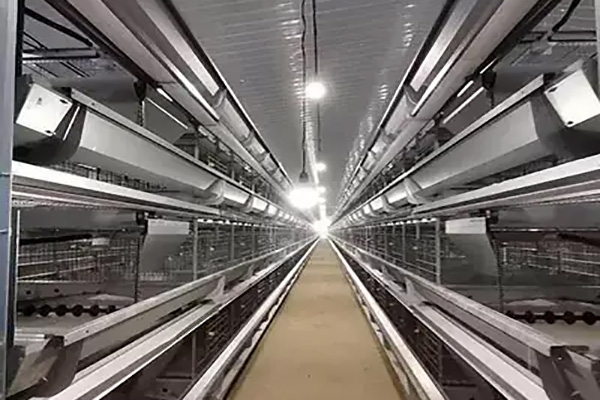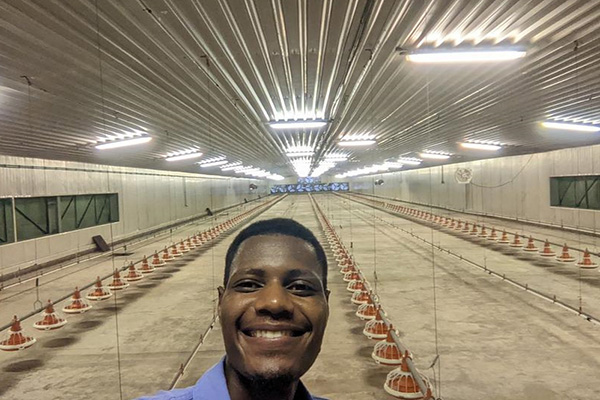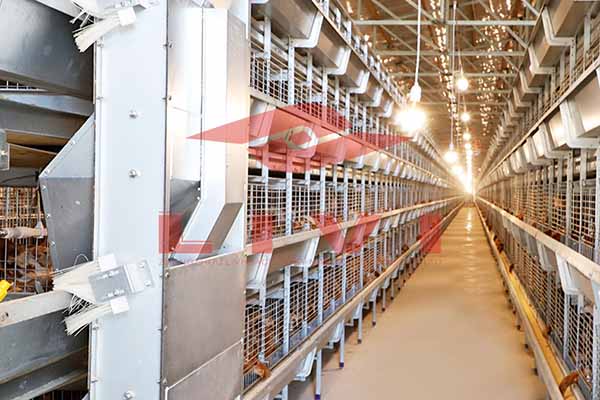The Essential Guide to Poultry House Ventilation for 200,000 Laying Hens in Uganda
Ventilation is a critical component in the successful operation of a poultry house, particularly when managing a large-scale operation like a 200,000 laying hen farm in Uganda. Proper ventilation ensures the health and productivity of the hens, as well as the comfort of the workers. In this article, we delve into the key aspects of poultry house ventilation for a 200,000 laying hen operation in Uganda.

Understanding the Ventilation Needs
Adequate air exchange is crucial in poultry houses. A typical guideline for the ventilation rate is 0.5-1.0 air changes per hour (ACH). This ensures that the ammonia, dust, and heat levels are kept under control, reducing the risk of respiratory infections in the hens.
| Area (Square Meters) | Required Air Changes per Hour (ACH) |
|---|---|
| 1,000 | 0.5-1.0 ACH |
| 2,000 | 1.0-2.0 ACH |
| 5,000 | 2.5-5.0 ACH |
Components of a Ventilation System
- Inlet Ventilation: Strategic placement of openings allows fresh air to enter the poultry house, diluting contaminants and maintaining the necessary ACH.
- Exhaust Ventilation: Extracts stale air, heat, and ammonia from the house, ensuring a constant flow of clean air.
- Control Systems: Include thermostats, controllers, and fans that manage air flow and temperature inside the poultry house.
- Natural and Mechanical Ventilation: Combining natural wind and heat-driven air movement with mechanical fans can optimize ventilation efficiency.
Considerations for Poultry House Ventilation in Uganda
Given the climate in Uganda, it’s important to design the ventilation system to handle high humidity and heat. Here are some key factors to consider:
- Location: Position the poultry house away from potential sources of dust and wind, such as trees or roads.
- <strong-materials: Use materials that allow air to pass through and minimize heat absorption.
- Drip Lines: Install drip lines to prevent condensation and maintain humidity levels.
- Solar Power: Utilize solar-powered fans and lighting to reduce energy costs and reliance o
 n external power sources.
n external power sources.
Benefits of Proper Ventilation
Implementing an efficient ventilation system offers numerous benefits:
- Reduces the risk of respiratory infections
- Improves hatching rates and egg quality
- Increases productivity and weight gain
- Enhances biosecurity and disease control
- Ensures the comfort of workers
Conclusion
Proper poultry house ventilation is essential for the success of a 200,000 laying hen farm in Uganda. By understanding the ventilation needs, key components, and unique considerations for the local climate, poultry farm owners and investors can create a productive and comfortable environment for their hens.
Are you planning to build a poultry house in Uganda? Don’t hesitate to reach out for a free poultry design plan and equipment quote from LIVI Mechanical. Contact us today!





